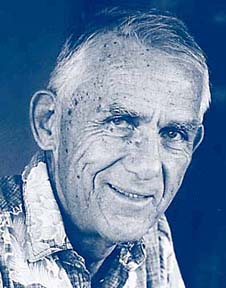


After beaches, Kelly’s
focus shifts to sovereigntySurfers never really give up the sport. No matter the age or station in life, surfers gather and, with infectious grins and conspiratorial winks, excitedly describe their great rides. And then there is John Kelly, 80, a surfer and skin diver who is just as excited not only with the ride, but with saving the surf, too.
Concerned by Hawaii's rapid development in the early '60s, Kelly realized that the way to protect the ancient Hawaiian sport was to enlist the state's young surfers.
"In the '70s, we stopped 38 major projects worth $2.5 billion," he said.
Kelly had two tricks: people power and publishing power.
"The most important was the series of big demonstrations in the state Capitol," said Kelly, recalling one demonstration featuring 2,000 young surfers stomping in unison with such force that the concrete buckled and nearly cracked.
Kelly's secret weapon, however, was a printing press which he moved from location to location until it finally came to rest in a space under his house.
"We had a lot of victories that were the result of the print shop we started in 1968 on School Street. With the donated equipment, we put out thousands of brochures," he said.
With a small group of high school students, Kelly would leaflet surfing sites, beaches, wherever he could alert beach users to threatened construction projects.
"My main regret is, I wish we had more people doing the same sort of thing we were doing from the beginning."
Though Kelly and his organization, Save Our Surf, were key in saving Magic Island and other sites, he is now shifting attention to the Hawaiian sovereignty movement. He is now pointing out past land grabs and injustices to native Hawaiians.
"I hope we can continue to educate the youth about the background of the takeover of Hawaii by foreigners and give a motive for youth groups to continue the fight against the system and preserve whatever we can of the shoreline," Kelly said.
The Honolulu Star-Bulletin is counting down to year 2000 with this special series. Each installment will chronicle important eras in Hawaii's history, featuring a timeline of that particular period. This is the final installment. About this Series
Series Archive
Project Editor: Lucy Young-Oda
Chief Photographer:Dean Sensui